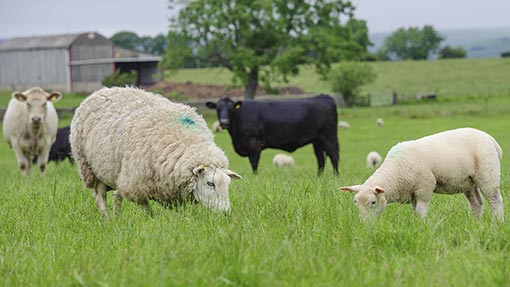Focus on margins to deal with beef and sheep price volatility

Beef and sheep farmers must get their businesses in shape to cope with sharp ups and downs in prices, Eblex’s annual conference heard this morning (4 November).
“It’s not the price that determines whether you make a living – it’s the margin,” said Eblex chairman John Cross.
Reviewing the year, Mr Cross said falling prices in the past 12 months across all farm commodities had shown volatility was here to stay.
All the speakers argued that red meat prices could not avoid shifts in world markets, so UK agriculture had to be ready to cope.
“It teaches us we have got to be better at reading the signs, using the best available intelligence out there, learning to mitigate and manage these fluctuations better,” said Mr Cross.
HSBC head of agriculture Allan Wilkinson showed that in the past five years, beef and sheep producers had returned the lowest farm business incomes of all sectors.
The most important change farmers could make was benchmarking themselves against top performers, he said.
Between 30-90% of the variation from the most profitable to the least profitable businesses came from whether they measured themselves against other farms or not, Mr Wilkinson said.
“Over the next five years up to 2020, farmers are going to receive less [single payments],” he said. “So therefore the exposure to volatility is potentially all the greater.”
“Business that don’t maximise the high points probably struggle to get through the low points.
“You need the fat on your back in the good times to get through the difficult times.”
Waitrose agriculture manager Duncan Sinclair said the supermarket was also taking a long-term view.
He said it was exploring how it could integrate its beef and sheep supply chains more in the future and create tools to give farmers more stability in the prices they are paid.
“We need to make sure we have got the right volume produced to the right specification, rocking up at the right time,” Mr Sinclair said.
“We are probably working to a three- to five-year time horizon.”
See also: Eblex claims multimillion-pound benefits to livestock
